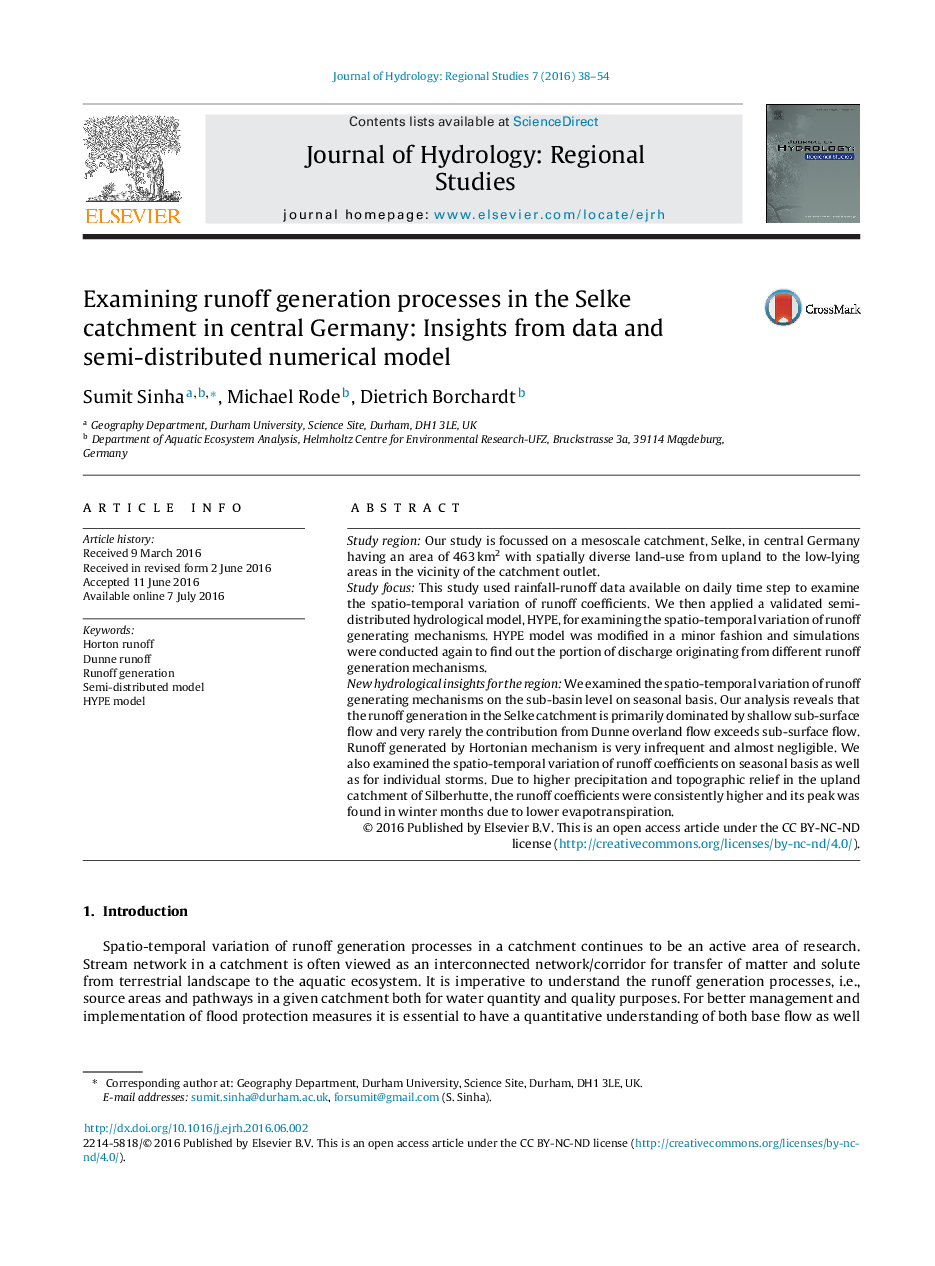| کد مقاله | کد نشریه | سال انتشار | مقاله انگلیسی | نسخه تمام متن |
|---|---|---|---|---|
| 4435078 | 1620138 | 2016 | 17 صفحه PDF | دانلود رایگان |
Study regionOur study is focussed on a mesoscale catchment, Selke, in central Germany having an area of 463 km2 with spatially diverse land-use from upland to the low-lying areas in the vicinity of the catchment outlet.Study focusThis study used rainfall-runoff data available on daily time step to examine the spatio-temporal variation of runoff coefficients. We then applied a validated semi-distributed hydrological model, HYPE, for examining the spatio-temporal variation of runoff generating mechanisms. HYPE model was modified in a minor fashion and simulations were conducted again to find out the portion of discharge originating from different runoff generation mechanisms.New hydrological insights for the regionWe examined the spatio-temporal variation of runoff generating mechanisms on the sub-basin level on seasonal basis. Our analysis reveals that the runoff generation in the Selke catchment is primarily dominated by shallow sub-surface flow and very rarely the contribution from Dunne overland flow exceeds sub-surface flow. Runoff generated by Hortonian mechanism is very infrequent and almost negligible. We also examined the spatio-temporal variation of runoff coefficients on seasonal basis as well as for individual storms. Due to higher precipitation and topographic relief in the upland catchment of Silberhutte, the runoff coefficients were consistently higher and its peak was found in winter months due to lower evapotranspiration.
Journal: Journal of Hydrology: Regional Studies - Volume 7, September 2016, Pages 38–54
